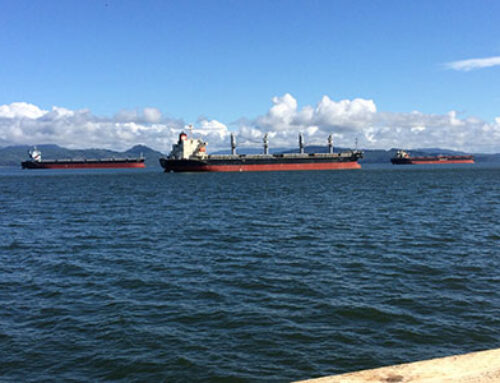Reading- History of Off Shoring
The origins of Offshoring to a U.S.A. enemy can be traced to World War II when Chiang Kai-shek was displaced by Mao, thanks to the United States, but that is another story, Link. Communism ensued and U.S. China problems began at our own hands.
History is important. The history of offshoring to China, one of those problems, follows the story of the Steel Belt which became the Rust Belt based on three major factors:
- US Federal Reserve decision to raise interest rates so imports became “cheaper”,
- Unionization of labor which forced companies to move to the Southeast U.S. and then offshore, and
- Trade deals (i.e. NAFTA) and “Free Trade” Agreements that were not so free.
The administrations that facilitated these changes did not have US citizens or their interests at heart. The mantra of “Globalization” was sold to American consumers as cool. Goods and services were so “cheap” and, yes, break regularly and as planned. Millennials recently figured “cheap” out and antique or vintage shopping became in vogue to find sustainable, diverse and high-quality products.
Consumer (and manufacturers) may think products (and suppliers) are cheaper, but at what true cost? The changes sacrificed American jobs, self-sufficiency, and manufacturing base, as well as product diversity, quality and delivery. Soon a lot of the US started to look like the old Rust Belt.
What about Risk? The risk of offshoring is known to many manufacturers and service providers, but less apparent to consumers until now. The COVID-19 scare has brought these hidden risks and realities to light, in a big and immediate way.
Writing and Arithmetic and Reshoring
Eight years ago, the Wall Street Journal (WSJ) published a weathervane report regarding the new wave of reshoring, about the time I gave my first talk on the topic. Wall Street Journal Article May 2012- Once Made in China: Jobs Trickle Back to US Plants. James Hagerty.
Whirlpool/ Kitchen Aid, Char-Broil, Otis Elevator, Caterpillar, General Electric and Ford Motor company were reshoring based on doing the math. “For Whirlpool, the decision to assemble hand mixers in the US was based on complicated calculations that varies for every manufacturer contemplating reshoring: the amount of money it saves on shipping and inventory, for example, off sets the higher wages it pays American workers. It also was able to use an existing US factory and further automate its assembly line.”
The calculations were not complicated. They were based on Value Stream Cost Accounting or Lean Accounting. These discovered it was not more profitable to make certain products offshore. They were able to make products in the U.S.A. with more profit, less lead time, minimized risk, and greater customer satisfaction. What did they find in the analysis? Unquantified costs rolled up into Overhead and Admin and related to
- Taxes, regulations, currencies
- Rising Chinese labor costs
- Cost of quality (defective products or components)
- Cost of shipping
- Customer response and product variety
In 2012, a MIT survey of 105 companies identified that 39% were considering reshoring.
Companies took a fresh look at their financial reports and cost accounting. The companies discovered they could improve not only financial performance but capture more market share, increase sales revenue, and improve customer response by reshoring.
To facilitate reshoring, the companies improved operational efficiency using Operational Excellence, Lean manufacturing, Sales Inventory and Operational Planning (SIOP) and other process engineering systems. Improvements were made across the entire Value Stream- Customers, Suppliers, Planning, Operations, Production and Logistics. A combination of improvements enabled these companies to reduce costs of goods, stay competitive and exceed China factory performance.
Reshoring Rebranded as Inshoring (Regionalization)
Seven years later, reshoring (Globalization) is being rebranded or refocused to Inshoring (Regionalization). Inshoring has a new name with the same foundation as Haggerty described in 2012. Suppliers and supply chains are changing with the continuing realization China and offshoring have not worked well.
The Economist published two articles in July 2019 describing the latest trends in Regionalization and factors, costs and risks driving Inshoring including: Link- Article 1 Link- Article 2
- The lack of wisdom of hyper globalization uncovered by true cost accounting
- Protectionism
- Planning and the wisdom of shorter, smarter, and faster supply chains to meet customer demands
- Benefits of reduced inventory and cheaper logistics, shorter cycle times by suppliers being closer to consumers
- Risk- Supplier, political, tariffs and trade agreements, and the Chinese New Year
- China’s increasing labor and related costs
- Customer demands for higher quality and more diverse products
- Expansion of customization and the acceleration of innovation
The engineering processes described to enable Inshoring include technology solutions, Lean cellular flow and continuous improvement, Just- In-Time, Automation and AI, and the use of 3D Printing.
The article foretold of the “new” supply chain strategies and realities which were revealed to the general public in the wake of COVID-19. These open secrets were not hidden but were lurking problems, with potentially devastating outcomes. Perhaps the COVI-19 scare is an overreaction to a bad flu, as we may find out. Perhaps it is a gift coming out of the scare and a wakeup call on many levels, including on whose shore we should be manufacturing.
We will explore the details of Inshoring in a series of articles. The Mervyn Group and our key business partners are ready to help you Inshore to
- Evaluate cost of goods/ services sold in a comprehensive way (Value Stream Cost Accounting),
- Optimize processes and maximize efficiency (Operations Excellence, LEAN, SIOP, Technology and Automation),
- Evaluate the role of 3D printing,
- Identify new suppliers and supply chains,
- Help your sales team identify new Customers, and
- Implement a sales process to meet the needs of Inshoring Customers.
Contact Debra Mervyn Debra@MervynGroup.com to learn more.






